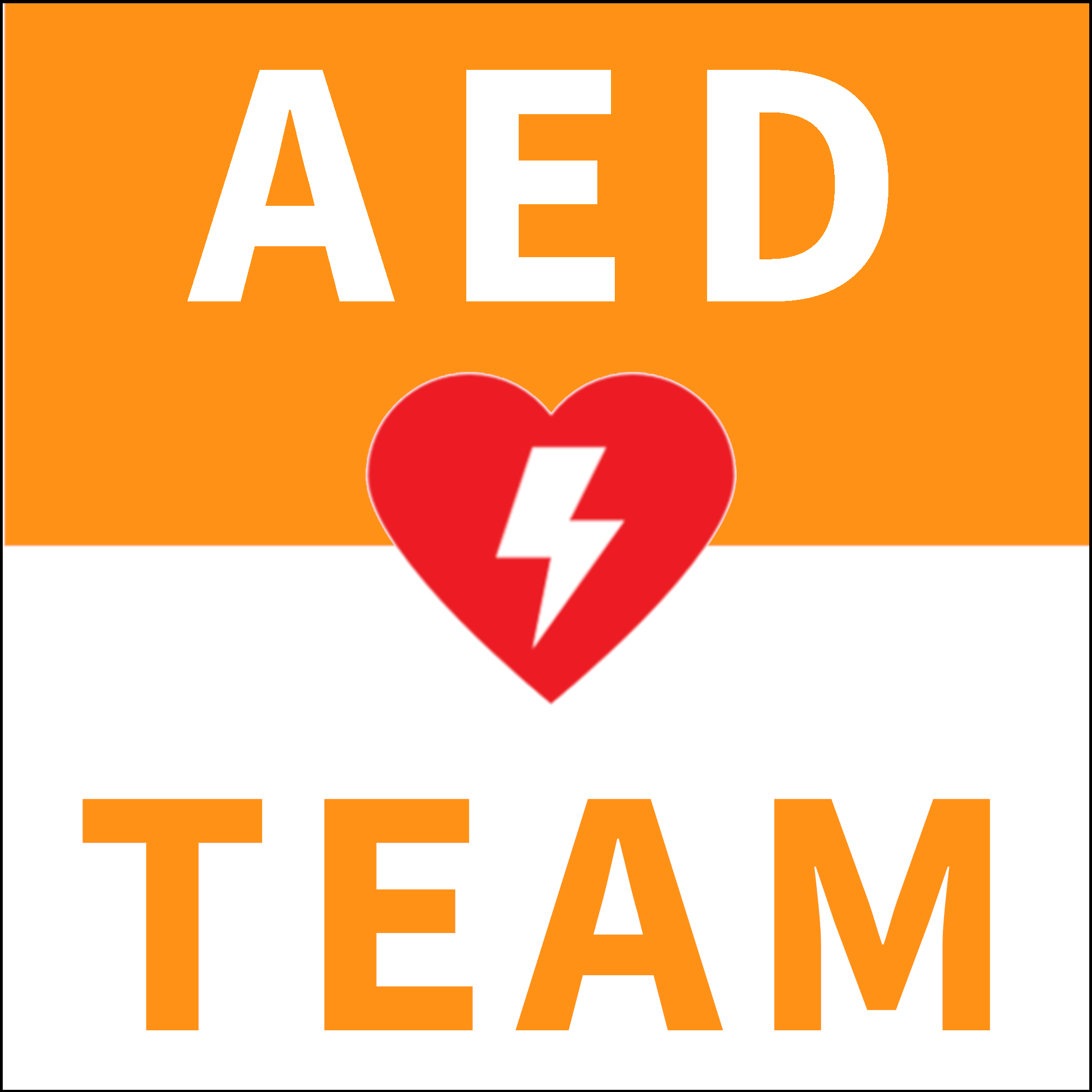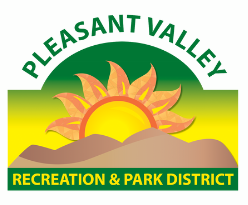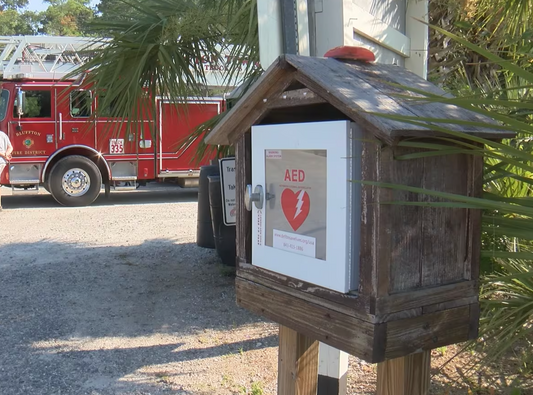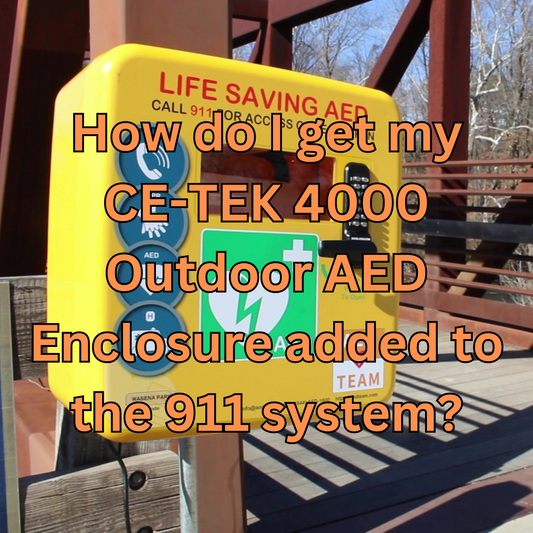On a crisp March evening in 2021, Scott LaBombard and friends gathered at the Municipal Playground in Westfield, Massachusetts for a game of pickleball. LaBombard, who also serves as President of the Little League Association, had been trained in CPR and to use an Automatic External Defibrillator (AED). He had no idea as he made his first serve of the match, that he would soon need to rely on these skills to save the life of a friend.
As LaBombard and friends were playing, they heard a loud crash come from the metal bleachers. They looked over to find one of their friends (referred to as Q) laying on the ground. LaBombard rushed over to evaluate the situation as his wife ran to a bright yellow cabinet labeled “LIFE SAVING AED” just feet from the bleachers. She dialed 9-1-1 and provided some details about what happened to the dispatcher. Within 50 seconds, the dispatcher had provided an access code for the yellow cabinet and the AED was retrieved.
Less Than 2 Minutes
Less than two minutes after the player collapsed, high-quality CPR had been initiated, the Emergency Medical Services system had been activated, and an AED had been connected to Q’s chest.
The AED prompted the rescuers to stand clear while it checked for a heart rhythm. Seconds later, it prompted the rescuers to press a flashing button to deliver an electrical shock to “reset” Q’s heart. The rescuers resumed CPR and moments later - before an ambulance even arrived on scene - their friend had regained consciousness surviving a very near brush with death.
The Right Place at the Right Time
Only months earlier, Susan Canning, director of KEVS Foundation, worked with the City of Westfield to install an outdoor AED enclosure at the Municipal Playground’s pickleball courts. Named for Kevin Major, an avid youth athlete who died of Sudden Cardiac Arrest (SCA) in 2011, KEVS Foundation works with schools and towns in Western Massachusetts to provide free cardiac screenings for student athletes and to place AEDs in publicly accessible settings.
With AEDs being electronic medical equipment, they are sensitive to extreme temperatures, moisture, and dust. AEDs have a hefty price tag as well with each device costing over $1,000. Canning needed to find the right balance of keeping the AED safe from tamper, theft, and New England weather while still providing fast access to the device when it is needed in an emergency.
SECURITY AND WEATHER
Several cabinets designed to house AEDs and lifesaving equipment exist on the market. Cabinets meant for indoor use are not heated and won’t protect equipment from rain, snow, and dirt. Some cabinets intended for outdoor use are heated but many lack security functions to keep out would-be thieves. Canning decided on the CE-TEK All-Weather AED enclosure built in the United Kingdom and distributed locally by AED Team.
These cabinets, constructed from industrial grade stainless steel or polycarbonate, are purpose-built for housing an AED in harsh conditions. AED pads are made using a water-based gel which can render pads unusable when frozen. An integrated heater in the CE-TEK enclosure kicks on to keep equipment above freezing during cold weather. Nearly impenetrable construction and a marine-grade lock protects the AED from mischief. An IP-66 rating ensures dust and moisture can’t get in.
A COMMUNITY EFFORT
With the help from KEVS Foundation and generous donations from Westfield Gas & Electric and Westfield Bank, the AED enclosure was installed in September 2020 outside of a service building adjacent to the pickleball courts and equipped with a Philips FRX AED.
While many things went right that March evening in Westfield, there are over 350,000 out-of-hospital cardiac arrests that occur each year in the United States. Over 90% of victims do not survive.
Survival from cardiac arrest requires fast action from bystanders with chest compressions being performed immediately and defibrillation occurring within minutes. With 20% of cardiac arrest victims collapsing in public settings, access to defibrillators is critical to saving lives.
While cardiac arrest among youth is less common than adults, there is a strong likelihood of survival in children with access to the correct equipment and training. An estimated 7,000 children in the United States experience cardiac arrest outside of hospitals each year. A significant number of these emergencies occur during youth sports including games, practices, and training.
BEYOND LEGISLATION
The legislation is behind the times in terms of requiring access to AEDs. Many states do not have a legal requirement to have AEDs available in schools or at their sports fields. Of the states that have AED is school requirements, there is great variability of funding and little done to enforce the mandate. Subject experts including the American Heart Association have created resources for schools to create Cardiac Emergency Response Plan (CERP) documents. It is essential for these to be created, practiced and to include deployment of AED units to youth sporting events.
Some schools will provide coaches or athletic trainers with an AED unit to be brought with them to each activity. This strategy is limited by the human element - AEDs can get left behind in the locker room, the coach’s car, the bus, or elsewhere. The strategy becomes costly when the school is providing AEDs for many different sports. Carrying the device to each game and practice also makes the AED susceptible to drops and potentially exposed to rain and cold temperatures.
Other schools designate the school’s wall mounted AED for use during sporting events. While this may be a good strategy for indoor sports like basketball, it presents serious delays in retrieving the AED when an emergency happens on the field. Responses may be further delayed by games occurring outside of school hours when the building is locked.
FORWARD THINKING COMMUNITIES
Communities and schools implementing similar strategies as Westfield is bound to save lives. Placement of AEDs in secure enclosures in places where youth athletes meet for games, practice, and training eliminates human factors caused by forgetting the device. It also significantly reduces the time it takes to deliver the first lifesaving shock when the AED is nearby. AEDs deployed on youth athletic fields also provide coverage for others using the field including recreation leagues and the general public.
Since 9-1-1 operators provide the access code for the cabinet, use of a secure AED enclosure further ensures that 9-1-1 is called and EMS routed to the emergency. Other emergency equipment such as bleeding control kits, naloxone, and epinephrine can be installed in AED enclosures to establish a complete life saving station.
Strategic placement of AEDs on youth athletic fields, in parks, and any place where people congregate is critical to ensure lifesaving treatment can be delivered when it is needed. Westfield’s Parks and Recreation Chair, Michael Tirrell remarked during a public meeting, “We always say if these things save one life, they’ve more than paid for themselves.” The pickleball player Q is fortunate that there were the right people - and equipment - in the right place at the right time. Westfield has plans to further expand public access AEDs to all of their parks and schools. This is an attainable goal for any community with far-reaching benefits promoting the well-being and safety of their residents.
For more information on KEVS Foundation, visit www.kevsfoundation.com
For American Heart Association’s CERP plan information, visit www.cpr.heart.org/en/training-programs/nation-of-heartsavers/cardiac-emergency-response-plan
For more information on the CE-TEK All Weather AED Enclosure, visit www.aedteam.com
About the Author: Richard Shok is a Registered Nurse, Paramedic, and the owner of Code One Training Solutions / AED Team. As a volunteer for a number of organizations which provide awareness and education for Sudden Cardiac Arrest, Rich has worked on a number of projects involving community CPR training, AED deployment strategies, and Heartsafe Community mentorship. Rich was a recipient of the Citizen CPR Foundation’s 40 Under 40 award and the University of Connecticut’s Graduate of the Last Decade and Dolan Distinguished Service Award. He resides in Roanoke, VA with his wife Allison and two boys.




